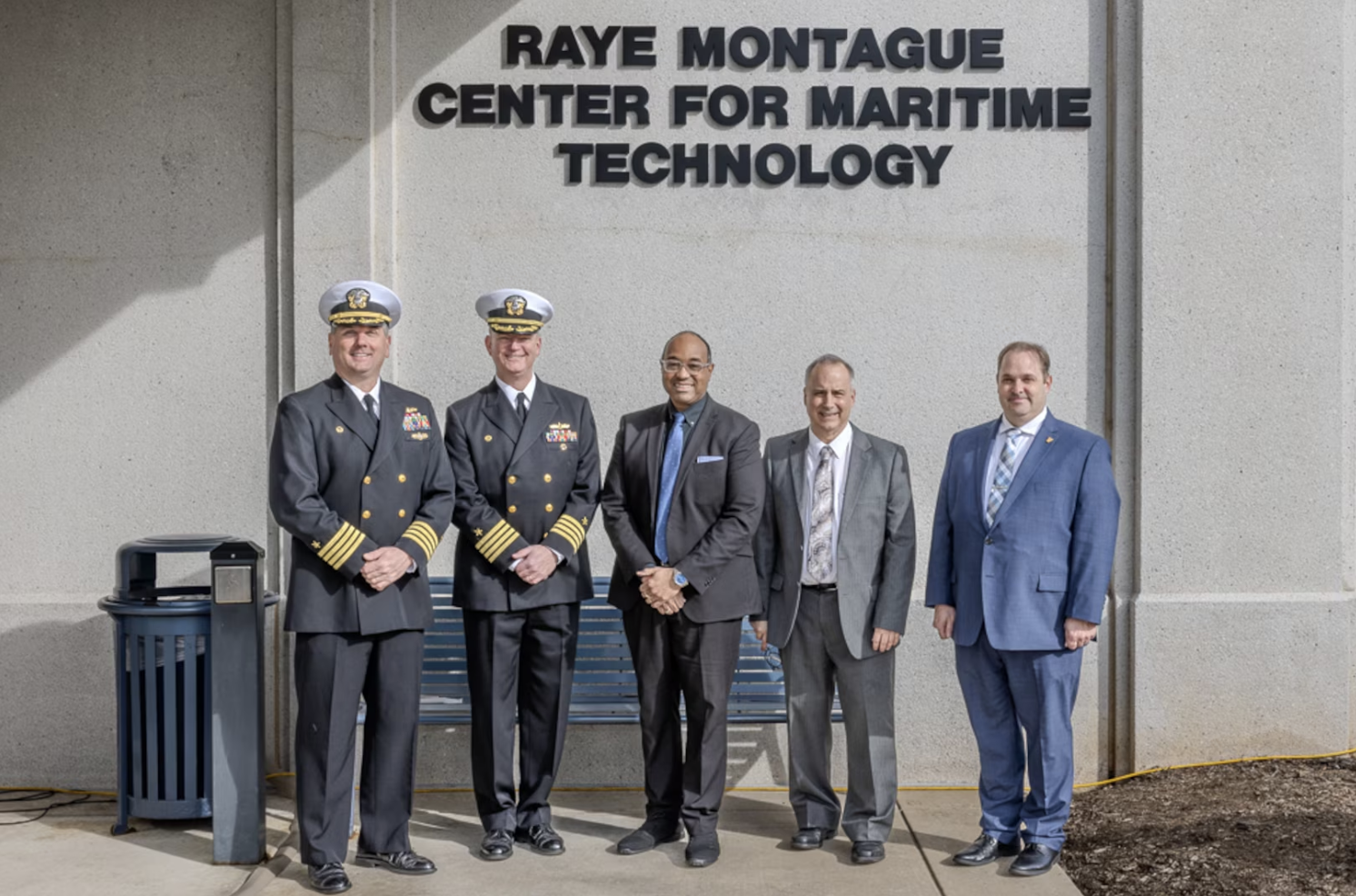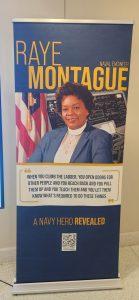Federal Building Renamed in Honor of Navy ‘Hidden Figure’ Raye Montague

A university professor had a once-in-a-lifetime experience of serving as one of the guest speakers celebrating the dedication of a federal building named in his mother’s honor.
Dr. David Montague, associate vice chancellor for academic affairs, student success at UA Little Rock, celebrated the dedication of a building at the Naval Surface Warfare Center, Carderock Division in Bethesda, Maryland.
Montague’s mother, the late Dr. Montague, an internationally registered professional engineer with the U.S. Navy, is credited with creating the first computer-generated rough draft of a U.S. naval ship. Montague was recognized as the U.S. Navy’s real-life “Hidden Figure” during naval events in Washington, D.C. and Virginia and on the Feb. 20, 2017, live episode of “Good Morning America.”
Chief of Naval Operations Adm. Lisa Franchetti signed a letter in August 2023 approving the renaming of Carderock’s Maritime Technology Information Center, located in Building 40, after the naval icon. Carderock marked this historic event by hosting a ceremony on Feb. 15, unveiling the new name of Building 40 to the Raye Montague Center for Maritime Technology.
Raye Montague posthumously received this dedication for her contributions to the U.S. Navy. David Montague attended the event with his wife Whitney, an engineer, and child Mace, a sociology major at UA Little Rock.
Montague and his family were touched by the many historic displays, research, and hard work that has gone into the building to honor Raye Montague’s lifetime of accomplishments.
“It was fantastic to be there in person to see the building and all the work they put into it,” Montague said. “They put a huge effort to turn this building into something people can enjoy and learn from. They even found a model of her first ship designed by a computer. A process that revolutionized the Naval fleet’s ship design time from two years by hand, to a little over 18 hours by computer. I was overwhelmed to see her honored this way. There’s even a picture of me as a baby in one of the timelines.”
Montague has many fond childhood memories of Carderock. As a single mother at the time, Raye Montague would often bring her young son to work with her.
“I learned how to program a computer at Carderock,” Montague said. “I was around 4 years old, and that is what my mom gave me to keep me busy. I remember just running around and exploring a lot as a kid.”
Montague, along with author Paige Bowers, co-wrote a book in 2021 about Raye Montague’s life, titled “OVERNIGHT CODE: The Life of Raye Montague, the Woman Who Revolutionized Naval Engineering.” As part of the building dedication celebrations, he held a book discussion about his mother’s life.

“I think my mom would be blown away by this, just happy to be recognized by the people who were part of the formative and early years of her career,” Montague said. “In our book, we mention this facility in two chapters. My mother started in the Applied Mathematics Lab at Carderock, and she did a lot of her formative, early career opportunities when she moved from Arkansas – during segregation – to Maryland, and the Navy gave her that opportunity. She really felt like the Carderock people were her extended family. She really took the work of designing the homes of sailors, marines, and contractors seriously. She wanted to keep them safe.”
Raye Montague began her civilian career as a clerk typist at the David Taylor Model Basin, now known as NSWC Carderock Division. She quickly showed her aptitude in science and math, which would eventually lead her to be reassigned to work with the new Universal Automatic Computer I (UNIVAC I) system, the world’s first commercially available computer. She is credited with designing the first draft of the Oliver Hazard Perry-class frigate in 1971 in less than 19 hours, earning her a Meritorious Civilian Service Award and revolutionizing ship design from that day forward.
“We owe a lot in the way we design ships to Raye Montague,” Carderock Technical Director Larry Tarasek said. “And we owe a lot in how we recognize the importance of diversity and inclusion to Raye Montague. The least we can do is name a building after her.”
The wonderful trip held one last surprise for Montague. He has been working with representatives from the U.S. Mint on a design of a $1 coin in honor of his mother, and a member of the U.S. Mint informed him just before the ceremony that the $1 coin in honor of Raye Montague will be released next year in 2025.
